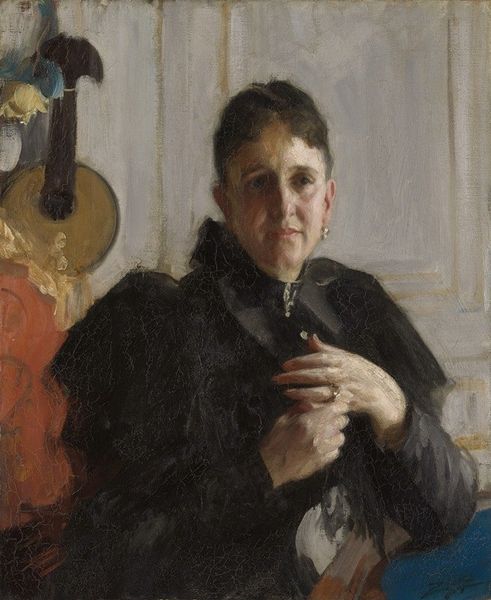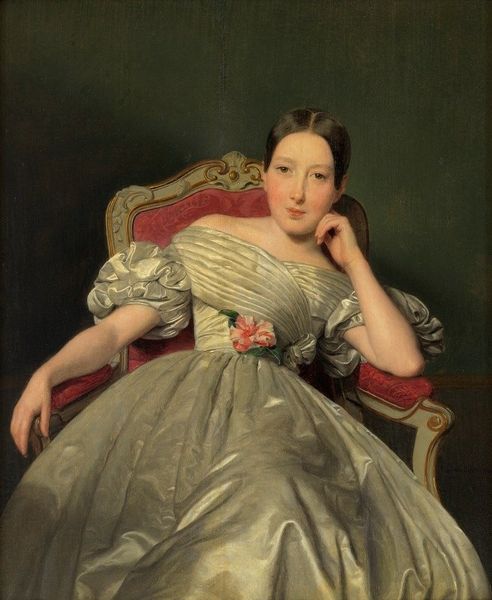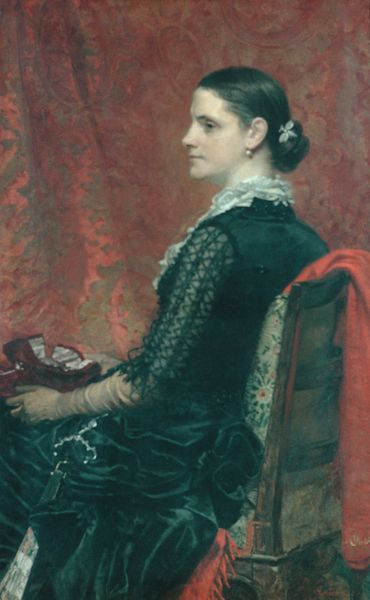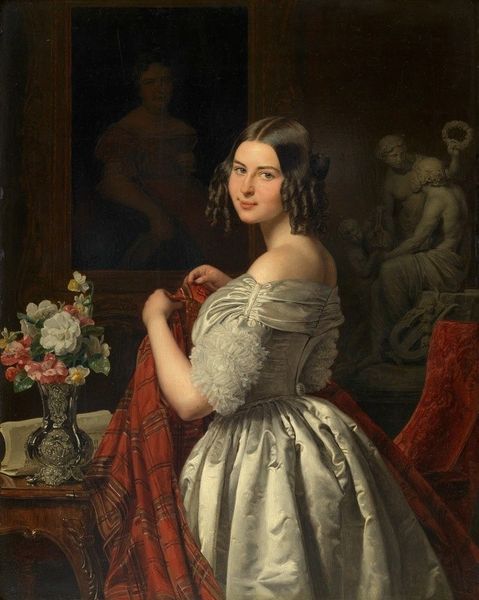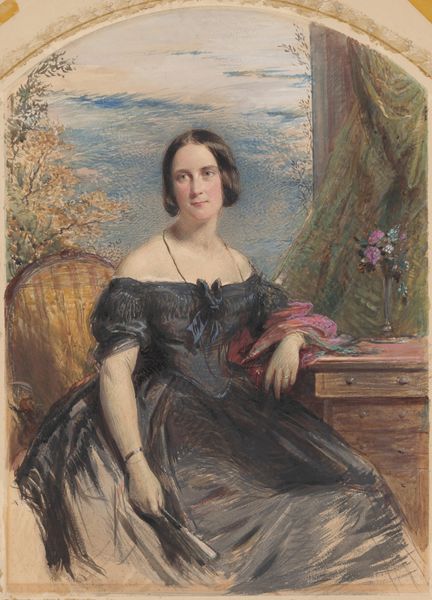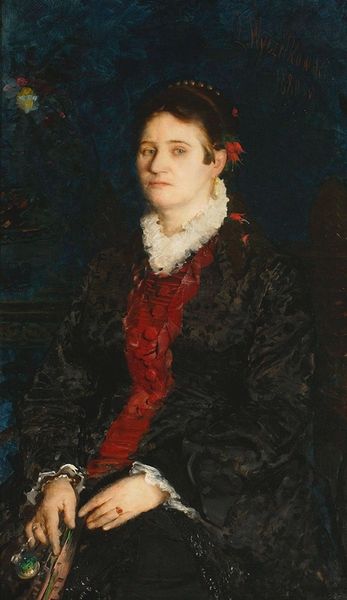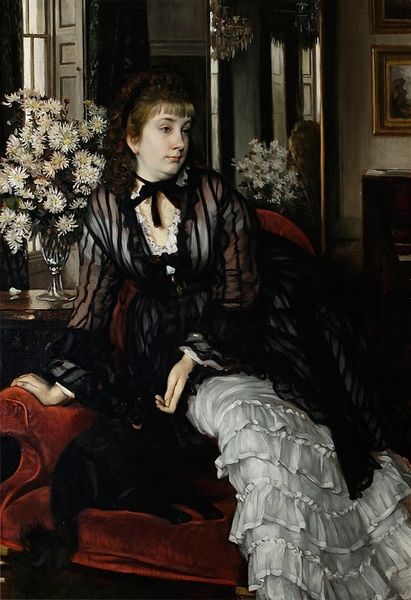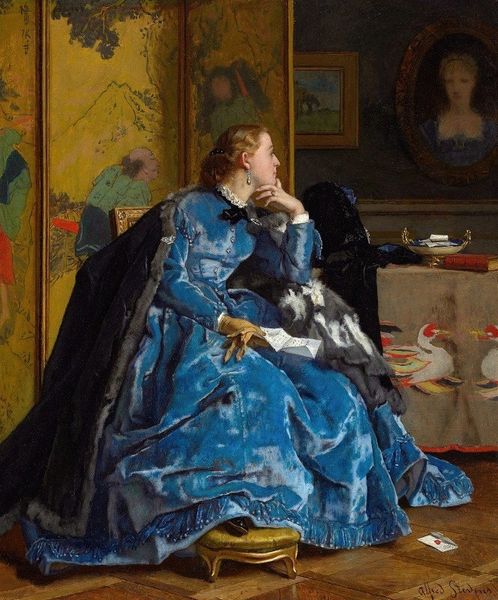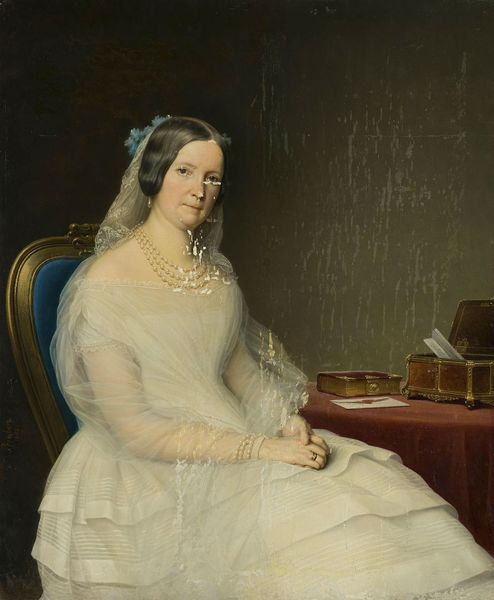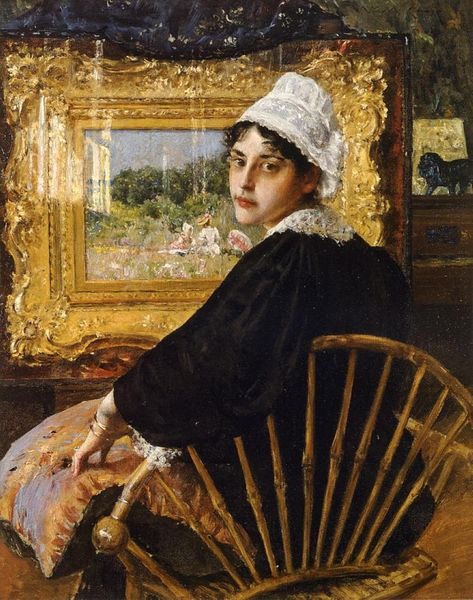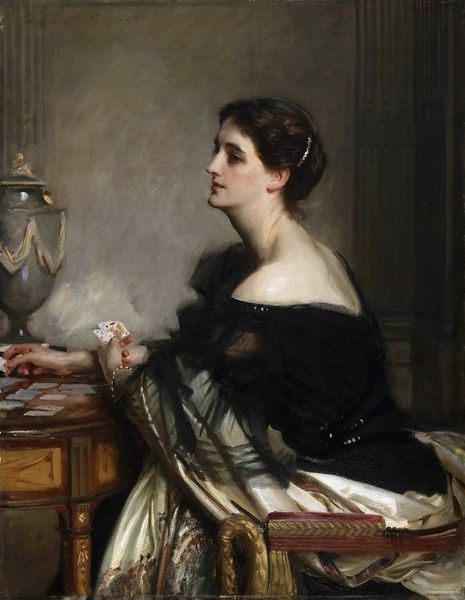
painting, oil-paint
#
portrait
#
figurative
#
painting
#
impressionism
#
oil-paint
#
genre-painting
#
modernism
Copyright: Public Domain: Artvee
Editor: Here we have Henri Gervex’s oil on canvas, *Portrait de Madame Blerzy*, painted in 1884. The woman in the portrait appears lost in thought, maybe a little sad. What do you see in this piece? Curator: I see a complex representation of bourgeois womanhood during a period of immense social change. Think about the limited roles available to women of this class at the time. Her melancholic pose, combined with the trappings of wealth—the jewelry, the luxurious fabrics—speaks to a kind of gilded cage. Does this resonate with you? Editor: Definitely, the details in her dress really emphasize the societal constraints. But I'm also wondering if her somber mood is hinting at a quiet rebellion. Curator: I like that reading! Consider this: while appearing conventional, this portrait may be subtly challenging those very conventions. The Impressionist style, even when used in portraiture, was often seen as radical. Gervex might be inviting us to look beyond the surface, to question the roles women were expected to play. Do you think her gaze invites intimacy or detachment? Editor: I think it's a mix of both, a certain vulnerability mixed with a sense of self-possession. Curator: Precisely! That tension makes this portrait so compelling. It's a negotiation between societal expectations and individual agency, rendered with delicate brushstrokes. Editor: This makes me see the portrait as a snapshot of a woman caught between worlds. I hadn't considered the rebellious implications of the Impressionist style itself! Curator: Absolutely! It's through this lens of social and artistic history that we can begin to unpack the power dynamics at play, and ultimately, the inner world of Madame Blerzy.
Comments
No comments
Be the first to comment and join the conversation on the ultimate creative platform.
